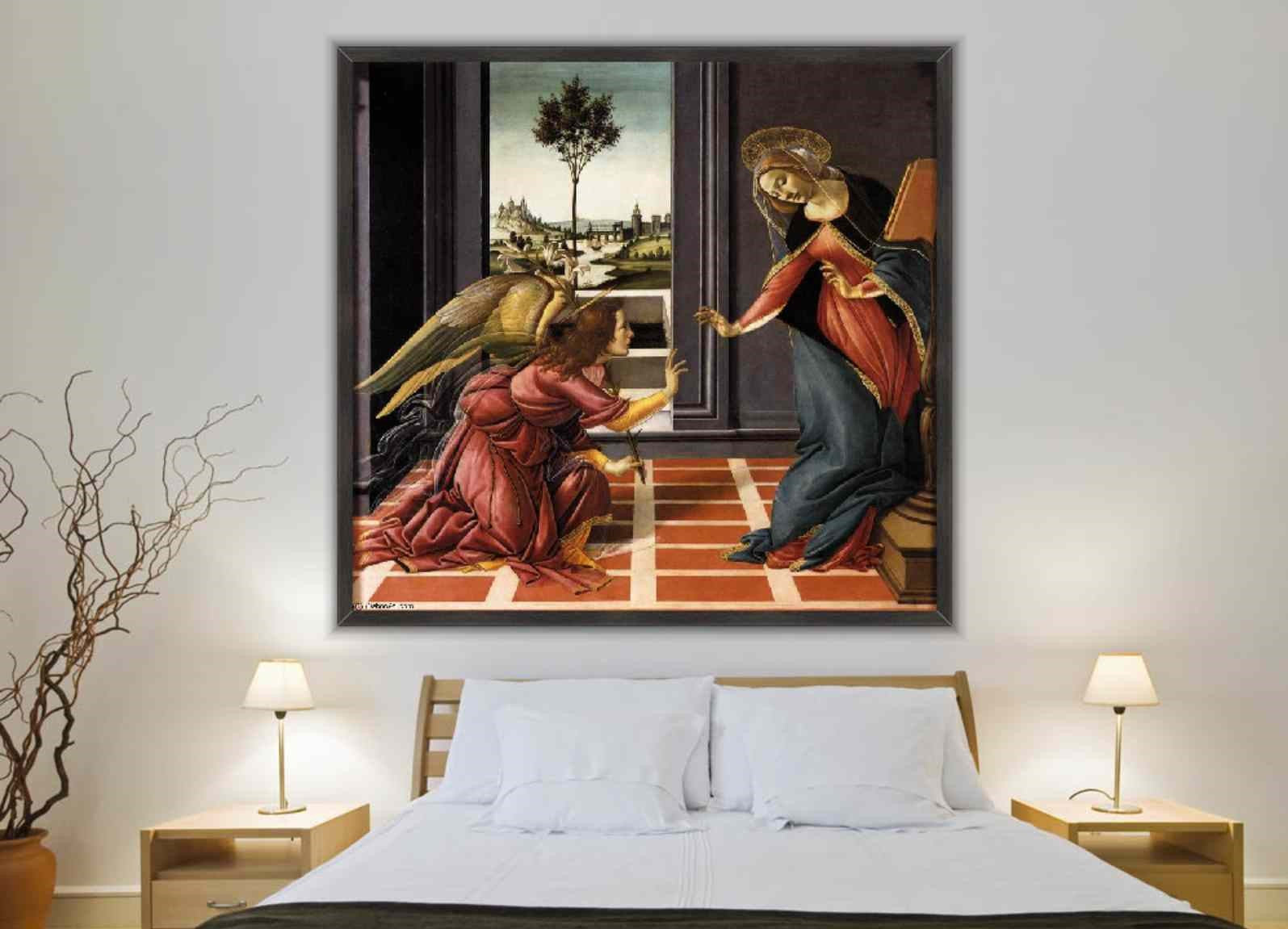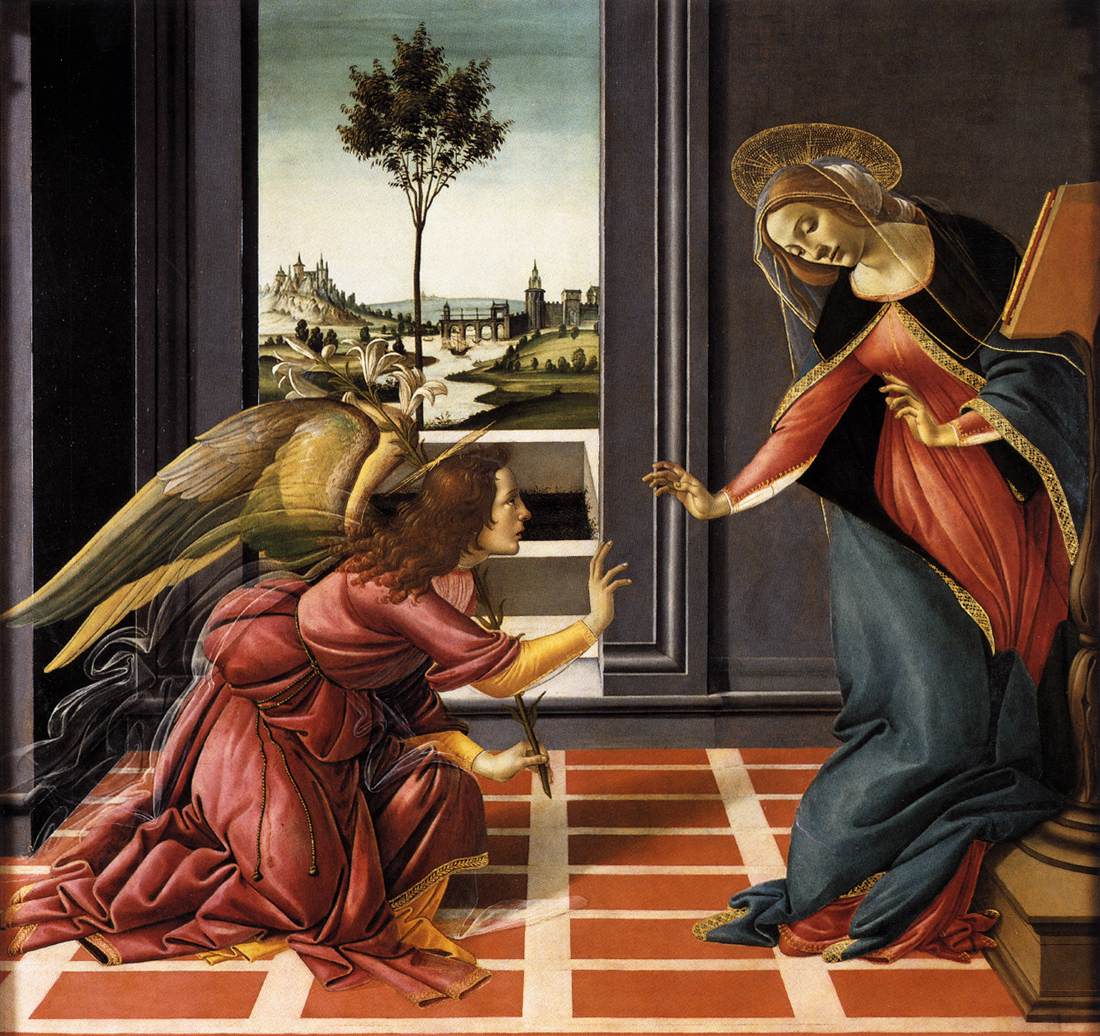Description
The Cestello Annunciation, also known as "The Annunciation", is a masterpiece by the Italian painter Sandro Botticelli, created around 1489-1490. The painting is currently in the Uffizi Gallery in Florence, Italy. The work represents the moment when the Archangel Gabriel announces to the Virgin Mary that she will conceive the son of God.
The scene is based on the biblical account of the Gospel of Luke 1:26-38. In the painting, the Archangel Gabriel can be seen holding a white lily, symbol of the purity of the Virgin Mary, and a scroll containing the divine message.
The painting was made using the technique of tempera on panel. Botticelli uses a characteristic style of the early Italian Renaissance, with great emphasis on linear perspective and meticulous attention to detail.
Architecture in painting plays an important role in composition and perspective. The construction of the room and the arrangement of the characters in it allow the viewer to appreciate the depth and three-dimensional space.
Sandro Botticelli was a disciple of the painter Fra Filippo Lippi, and the influence of his teacher is evident in his work. Similarities can be found in the way both artists represent the characters and in the treatment of the folds of the clothing.
The painting was originally commissioned for the church of Cestello (today known as Santa Maria Maddalena dei Pazzi) in Florence. Hence the name "Cestello Annunciation". The painting was painted for the chapel of the Ruccellai, a Florentine noble family who were devoted to the Order of Carmelites.
In the painting, you can see natural elements such as plants and flowers in the garden behind the Virgin Mary. This could be a reference to the connection between nature and divine life, a recurring theme in Renaissance art.
There is a belief that Botticelli painted exactly 72 folds on the Virgin Mary's tunic, which would symbolize her purity and humility. This detail, although not proven, shows the interest of Renaissance artists in symbolism and the use of numbers to represent ideas or concepts.
Without a doubt, Sandro Botticelli's Cestello Annunciation is a work of art rich in detail and symbolism, reflecting the style and skill of the artist in his time. The painting is a prominent example of the Italian Renaissance and offers viewers a unique glimpse of the moment when the Archangel Gabriel announces the conception of Jesus to the Virgin Mary.







